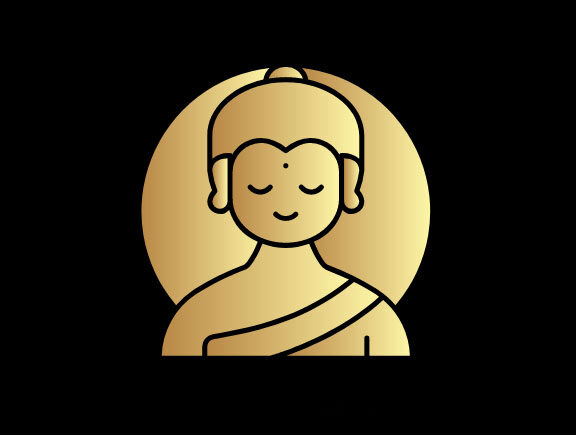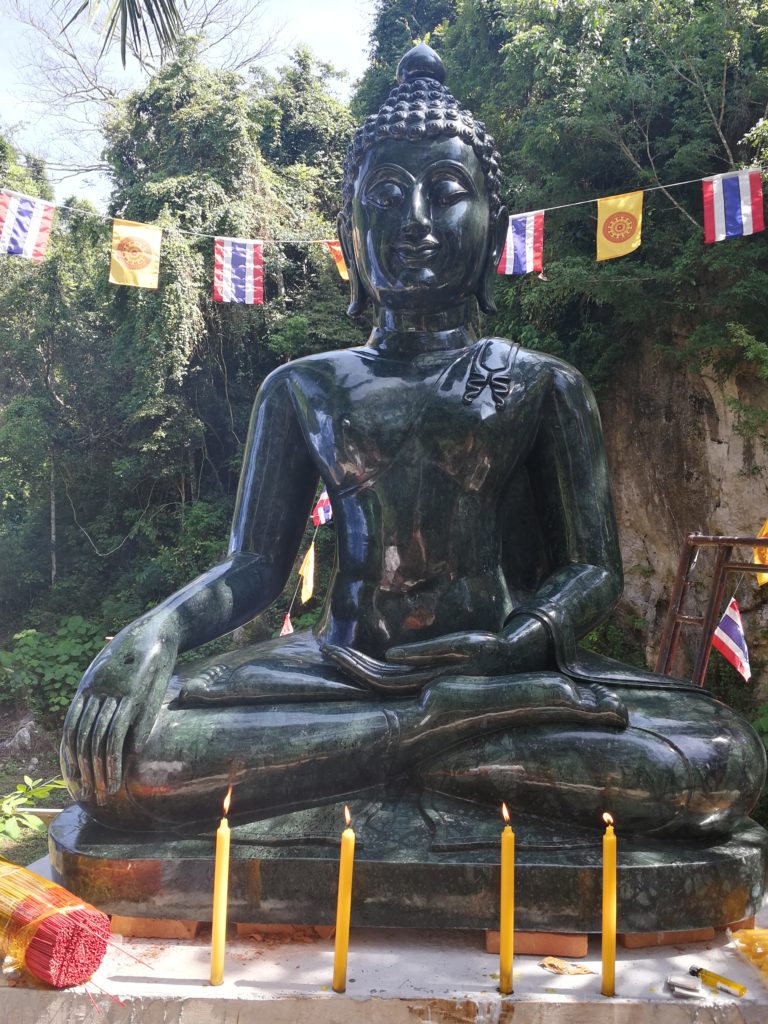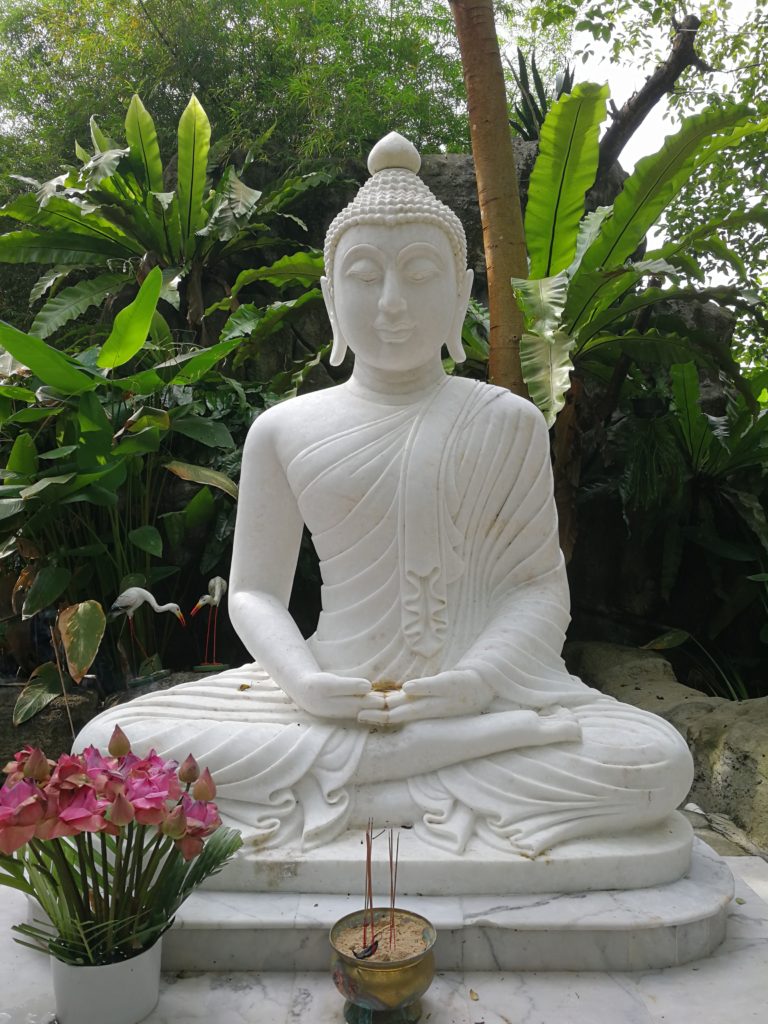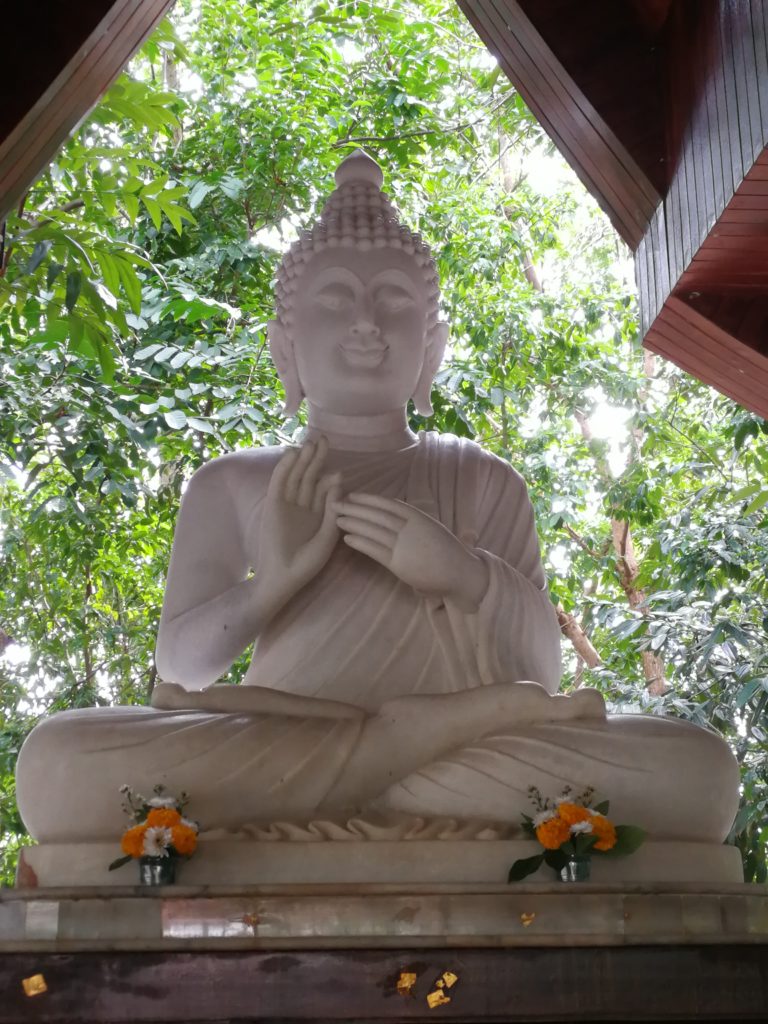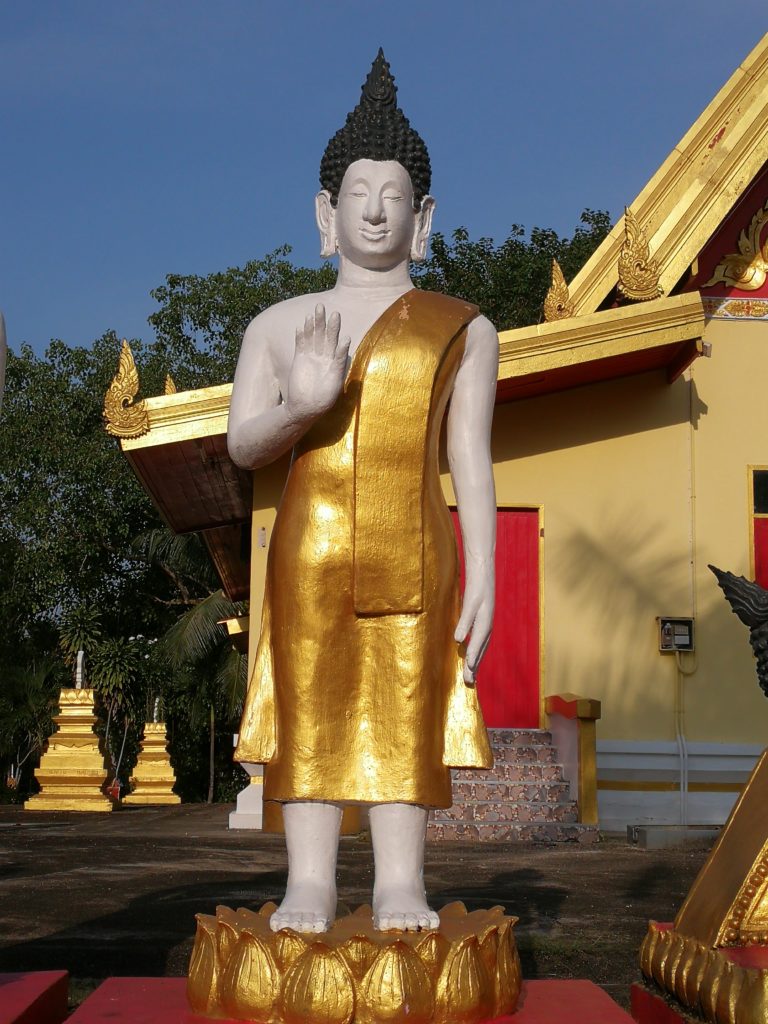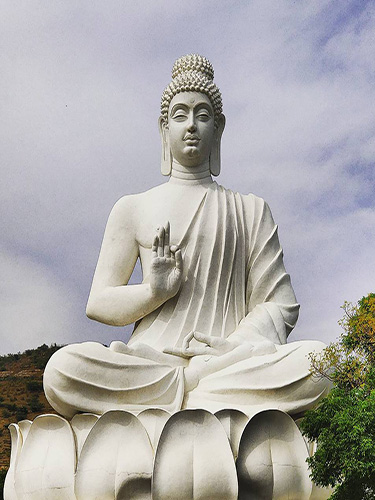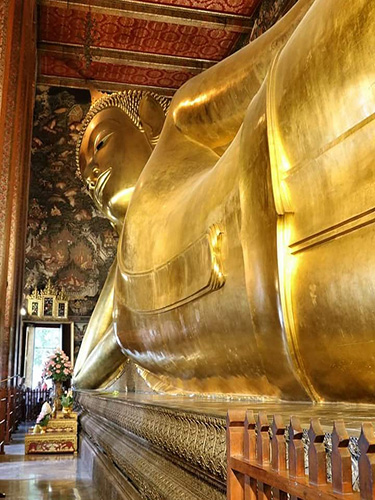Curious about the meaning behind Buddha hand gestures—also known as Buddhist Mudras and postures? In Buddhist iconography, each Mudra symbolizes important moments in the Buddha’s life and spiritual journey. From hand gestures to full-body postures like the Reclining Buddha, these Mudras hold deep spiritual meaning. In this guide, we explore the most common Buddha Mudras, their meanings, and how they are represented in Buddhist statues across different cultures.
Bhumisparsha Mudra
What does the Bhumisparsha Mudra signify?
The Bhumisparsha Mudra, also known as the “Touching The Earth” or “Subduing Mara” gesture, is one of the most iconic Buddha Mudras found in statues worldwide. In this Mudra, the Buddha’s right hand touches the Earth, symbolizing his victory over the demon Mara and the moment of enlightenment. The left hand rests on the lap, palm facing upward, representing meditation.
Dhyana Mudra
What does the Dhyana Mudra signify?
The Dhyana Mudra is closely linked with meditation, inner peace, and concentration. This Buddha Mudra is only used in seated representations, where both hands rest on the lap, right hand over left, with thumbs gently touching to form a triangle. This triangle symbolizes the Three Jewels of Buddhism: the Buddha, the Dharma, and the Sangha.
Dharmachakra Mudra
What does the Dharmachakra Mudra signify?
The Dharmachakra Mudra, or the “Wheel of Dharma,” is a symbolic hand gesture that represents the Buddha’s teachings. The thumb and index finger of both hands touch to form circles, symbolizing the cycle of life and the continuous flow of knowledge. This Mudra is often depicted during the Buddha’s first sermon in Sarnath, marking a pivotal moment when he shared his enlightened insights with the world.
Abhaya Mudra
What does the Abhaya Mudra signify?
The Abhaya Mudra symbolizes fearlessness and protection. In this gesture, the Buddha’s hand is raised with the palm facing outward, a gesture seen across standing, walking, and seated statues. In Thailand, variations of this Mudra include the “Monday Buddha” and “Walking Buddha,” where it symbolizes peace and conflict resolution.
Vitarka Mudra
What does the Vitarka Mudra signify?
The Vitarka Mudra symbolizes the transmission of knowledge and intellectual discussion. The right hand, held near the chest, forms a circle by touching the thumb and index finger, representing the endless flow of wisdom. This Mudra is a common feature in statues where the Buddha is depicted teaching, signifying the passing of enlightened knowledge to his disciples.
Reclining Buddha
What does the Reclining Buddha signify?
The Reclining Buddha symbolizes the Buddha’s peaceful passing into Nirvana during Mahaparinirvana. This iconic posture portrays the Buddha lying on his right side, head resting on a cushion, as he leaves his physical body behind after achieving enlightenment. This posture encourages followers to strive for their own liberation from the cycle of rebirth, Samsara. Famous Reclining Buddha statues, like those at Wat Pho in Bangkok and Maha Bodhi Ta Htaung in Burma, embody this serene moment of transcendence.
Conclusion
The various Buddhist Mudras and postures represent significant moments in Buddhist teachings, each one filled with meaning, symbolism, and cultural significance. Whether in meditation or during monumental spiritual events, these gestures guide followers toward a deeper understanding of the path to enlightenment. Explore our complete collection of Buddhist amulets and statues to discover the rich history and spirituality these Mudras convey.
Here are a few hand-picked articles for you to read next:
